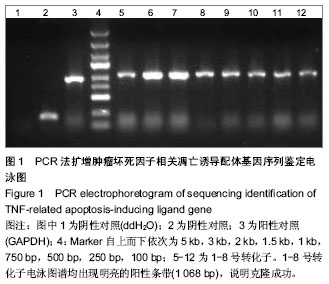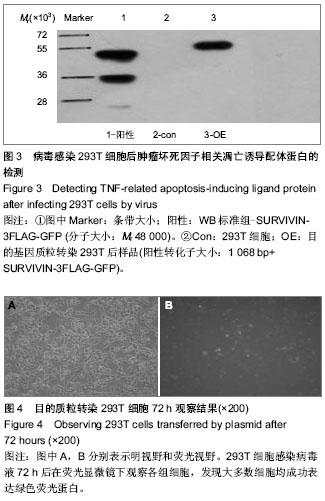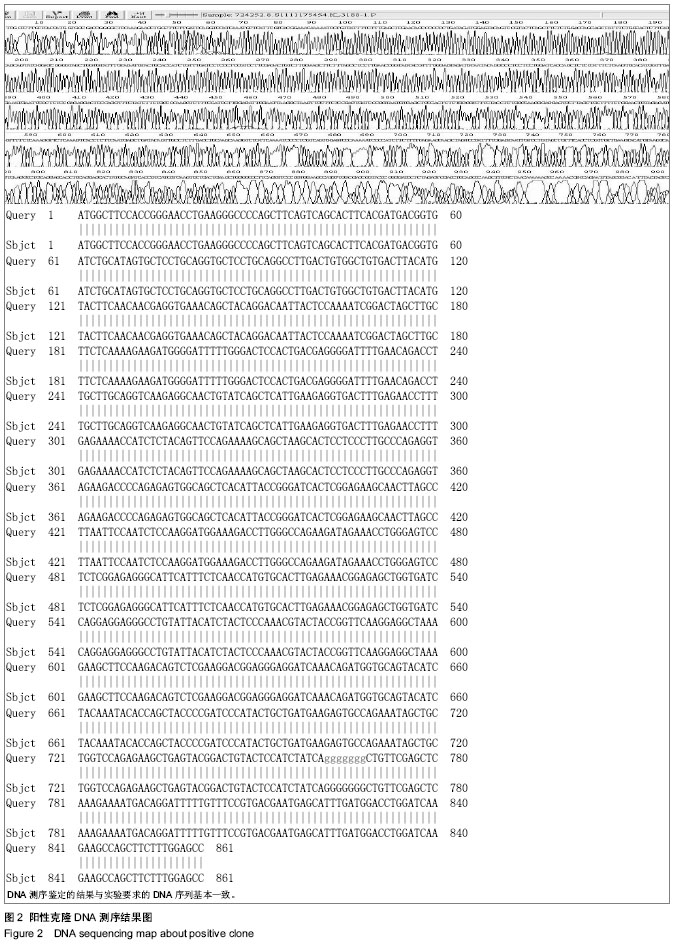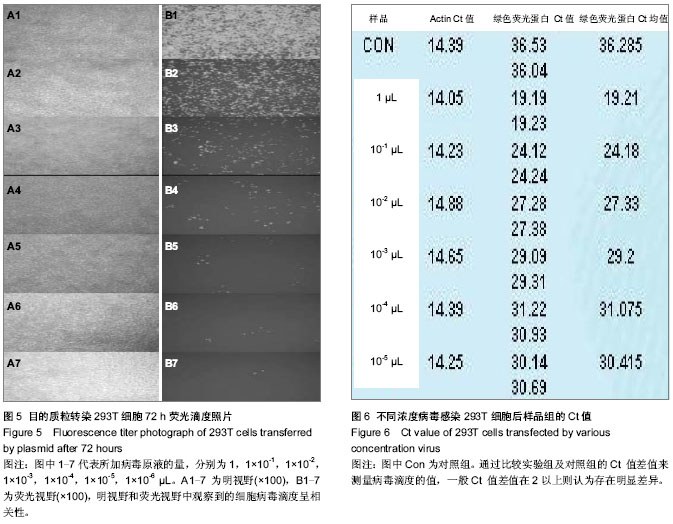| [1] Wirth T, Parker N, Ylä-Herttuala S. History of gene therapy. Gene. 2013; 525(2):162-169. [2] Boye SE, Boye SL, Lewin AS, et al. A comprehensive review of retinal gene therapy. Mol Ther. 2013;21(3):509-519.[3] Davanzo R, Zauli G, Monasta L, et al. Human colostrum and breast milk contain high levels of TNF-related apoptosis-inducing ligand (TRAIL). J Hum Lact. 2013; 29(1): 23-25.[4] Wajant H, Pfizenmaier K, Scheurich P. TNF-related apoptosis inducing ligand (TRAIL) and its receptors in tumor surveillance and cancer therapy. Apoptosis. 2002; 7(5): 449-459.[5] Gonzalvez F, Ashkenazi A. New insights into apoptosis signaling by Apo2L/TRAIL. Oncogene. 2010; 29(34): 4752- 4765. [6] Pietersen AM, van der Eb MM, Rademaker HJ, et al. Specific tumor-cell killing with adenovirus vectors containing the apoptin gene.Gene Ther. 1999; 6(5):882-892.[7] Shi J, Zheng D, Liu Y, et al. Overexpression of soluble TRAIL induces apoptosis in human lung adenocarcinoma and inhibits growth of tumorxenografts in nude mice. Cancer Res. 2005; 65(5):1687-1692.[8] Chen C, Akerstrom V, Baus J, et al. Comparative analysis of the transduction efficiency of five adeno associated virus serotypes and VSV-G pseudotype lentiviral vector in lung cancer cells. Virol J. 2013; 10:86.[9] Yan F, Zheng Y, Huang L. Adenovirus-mediated combined anti-angiogenic and pro-apoptotic gene therapy enhances antitumor efficacy in hepatocellular carcinoma. Oncol Lett. 2013; 5(1):348-354. [10] Zhang Y, Qu ZH, Cui M, et al. Combined endostatin and TRAIL gene transfer suppresses human hepatocellular carcinoma growth and angiogenesis in nude mice. Cancer Biol Ther. 2009; 8(5):466-473. [11] Sun W, Jiang Z, Xiang TX, et al. Anti-tumor effect of eukaryotic expressing plasmid containing soluble tumor necrotic factor-related apoptosis inducing ligand combined with human angiostatin Kringle (1 - 3) genes on human gastric cancer xenografts in nude mice. Zhonghua Yi Xue Za Zhi. 2009; 89(12):841-845.[12] Rasul A, Yu B, Zhong L, et al. Cytotoxic effect of evodiamine in SGC-7901 human gastric adenocarcinoma cells via simultaneous induction of apoptosis and autophagy. Oncol Rep. 2012; 27(5):1481-1487.[13] Zheng Y, Chen H, Zeng X, et al. Surface modification of TPGS-b-(PCL-ran-PGA) nanoparticles with polyethyleneimine as a co-delivery system ofTRAIL and endostatin for cervical cancer gene therapy. Nanoscale Res Lett. 2013; 8(1):161.[14] Qiu B, Ji M, Song X, et al. Co-delivery of docetaxel and endostatin by a biodegradable nanoparticle for the synergistic treatment of cervical cancer. Nanoscale Res Lett. 2012; 7(1): 666.[15] Moniri MR, Sun XY, Rayat J, et al. TRAIL-engineered pancreas-derived mesenchymal stem cells: characterization and cytotoxic effects on pancreatic cancer cells. Cancer Gene Ther. 2012; 19(9):652-658.[16] Mohr A, Albarenque SM, Deedigan L, et al. Targeting of XIAP combined with systemic mesenchymal stem cell-mediated delivery of sTRAIL ligand inhibits metastatic growth of pancreatic carcinoma cells. Stem Cells. 2010 ;28(11):2109- 120.[17] Xia P, Zhu J, Zhu G. Escherichia coli Nissle 1917 as safe vehicles for intestinal immune targeted therapy--a review. Wei Sheng Wu Xue Bao. 2013;53(6):538-544.[18] Cronin M, Stanton RM, Francis KP, et al. Bacterial vectors for imaging and cancer gene therapy: a review. Cancer Gene Ther. 2012;19(11):731-740.[19] Bhatia S, Menezes ME, Das SK, et al. Innovative approaches for enhancing cancer gene therapy. Discov Med. 2013; 15(84): 309-317.[20] Prinz-Hadad H, Mizrachi T, Irony-Tur-Sinai M, et al. Amelioration of autoimmune neuroinflammation by the fusion molecule Fn14•TRAIL. J Neuroinflammation. 2013;10:36. [21] Chiu TL, Wang MJ, Su CC. The treatment of glioblastoma multiforme through activation of microglia and TRAIL induced by rAAV2-mediated IL-12 in a syngeneic rat model. J Biomed Sci. 2012;19:45.[22] Balyasnikova IV, Ferguson SD, Han Y, et al. Therapeutic effect of neural stem cells expressing TRAIL and bortezomib in mice with glioma xenografts. Cancer Lett. 2011; 310(2): 148-159. [23] El-Aneed A. An overview of current delivery systems in cancer gene therapy. Journal of Controlled Release. 2004; 94(1):1-14.[24] Mancheño-Corvo P, Martín-Duque P. Viral gene therapy. Clin Transl Oncol. 2006;8(12):858-867.[25] Schabowsky RH, Sharma RK, Madireddi S, et al. ProtEx technology for the generation of novel therapeutic cancer vaccines. Exp Mol Pathol. 2009; 86(3):198-207. [26] Schweizer M, Merten OW. Large-scale production means for the manufacturing of lentiviral vectors. Curr Gene Ther. 2010; 10(6):474-486.[27] Segura MM, Mangion M, Gaillet B, et al. New developments in lentiviral vector design, production and purification. Expert Opin Biol Ther. 2013;13(7):987-1011.[28] Fu XR, Zhang XD, Zhang C, et al. Construction of a lentiviral vector carrying TRAIL gene and its infection efficiency to lymphoma cells in vitro. Zhongguo Shi Yan Xue Ye Xue Za Zhi. 2012;20(4):900-905. |



